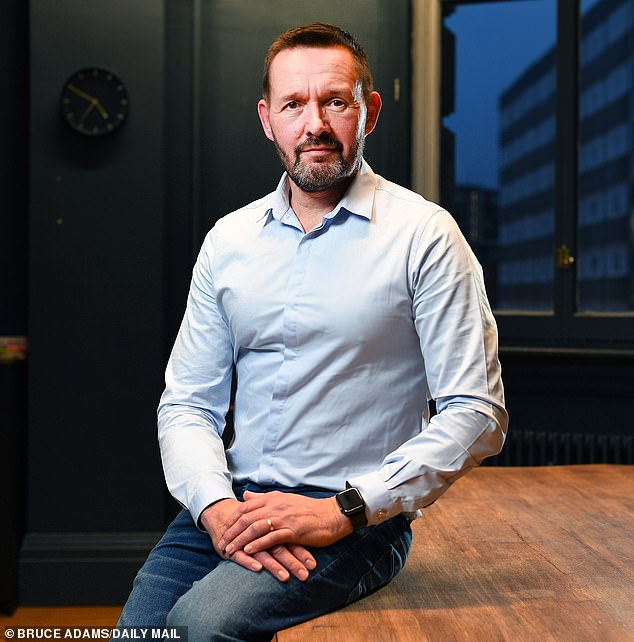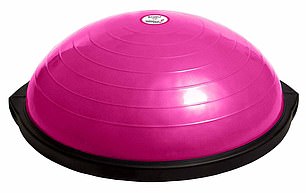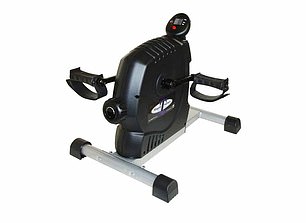‘Not a day goes by when I don’t think about her’: Dianne Oxberry was a much-loved BBC presenter who died just 10 days after she was told she had cancer… now, one year on, her husband shares her story in the hope it will save others
- Dianne Oxberry died aged 51 ten days after being diagnosed with ovarian cancer
- The pain and shock is still visible in the eyes of her grieving husband, Ian Hindle
- The news that she had stage 3 ovarian cancer arrived on New Year’s Eve 2018
Just over a year ago, BBC presenter Dianne Oxberry took part in a charity walk for Children In Need, called ‘Plod for Pudsey’.
She walked ten miles in a loop along the North-West coast, from Blackpool to Fleetwood, smiling and laughing with well-wishers and schoolchildren along the way. Two days later she did another ten-mile stint, around the Wirral.
Everyone knew Dianne. Her pretty face had been welcomed into homes in the region for 24 years, as the resident meteorologist (or ‘weather girl’ — Dianne didn’t really care either way) for BBC North West. She looked healthy and happy, a professional doing her bit for her community.
Eight weeks later she was dead, aged 51, just ten days after being diagnosed with an aggressive form of ovarian cancer.

Dianne Oxberry (pictured) died aged 51, just ten days after being diagnosed with an aggressive form of ovarian cancer
There had been no warning, no time to make plans. Suddenly Dianne was gone.
Understandably, the pain and shock is still visible in the eyes of her grieving husband, Ian Hindle.
‘Not a day goes by when I don’t think about her, miss her or, quite often, cry thinking about her,’ admits the 57-year-old cameraman, father of their two young children. ‘I miss her sense of humour, her love. She was a brilliant wife and mother and I miss all the things we did together.
‘Anniversaries have been a real struggle. Christmas, which brought back all the memories from last year, was really hard. You know you have to face it and getting through it is just another step forward.
‘But I miss her not being there for those key moments — when the kids have done something amazing and I think: ‘Oh, I’d have phoned her up to say something about it.’ Or when you’re having a bad day and want to talk to your friend, your partner, and you can’t because she’s gone.’
Dianne’s warm, natural presenting style made her a hugely popular broadcaster on both television and radio. Although she had worked alongside stars such as Radio 1’s Simon Mayo and Steve Wright, she was best known as just Dianne, who told the North West when to get the barbecue out of the garage at the weekend.

Understandably, the pain and shock is still visible in the eyes of her grieving husband, Ian Hindle. The couple are pictured on their wedding day
Local boy and comedian Peter Kay once gatecrashed her weather report, getting down on his knees to say: ‘Dianne Oxberry… God love her… you’ve made it sunshine for everybody.’
When she died in January 2019, her death left a gaping hole in her family’s lives.
‘The speed of the disease was so shocking for all of us,’ says Ian. ‘At first, it wasn’t as if she was so desperately ill that we thought she was going to die. But it’s a cliché to think cancer takes a long time. Sometimes it does and sometimes it doesn’t.’
The couple, whose family home is in south Manchester, met in 1991 when Dianne started working on a Saturday-morning TV show, The 8.15 From Manchester.
‘She was very quick-witted and would always be able to say something funny,’ says Ian. ‘The day we first met, I was miming on stage to a pop song, so the other cameramen could rehearse getting the right shot. Dianne came in, saw me and she told me later that was the moment she thought, ‘Yep, he’s the one’.’
They married in 1993 and Dianne set to work making their dream home. ‘She put me to shame when it came to DIY,’ says Ian. ‘She fitted the kitchen, she would lay floors — a neighbour recalls popping round one day and finding her on her own, trying to get a large wardrobe down the stairs.’

‘Not a day goes by when I don’t think about her, miss her or, quite often, cry thinking about her,’ admits the 57-year-old cameraman, father of their two young children
Fifteen years later, their two children were born. Ian has never revealed their names or ages in any interview and wishes them to remain anonymous.
‘Dianne was very protective of their privacy,’ he says. ‘While the outpouring of public grief in response to Dianne’s death was amazing and gave me comfort, it would be overwhelming for the children to deal with.
‘Not many people’s mums have public memorials held at Manchester Cathedral.
‘She was a fantastic mum. I spent a fair amount of time away from home because of work but she just got on with it. She had children, a horse, dogs — I can’t imagine how she managed to cope with them all and do a job. But she did.
‘She was incredibly healthy, which is why this came out of the blue for us all. There is no history of ovarian cancer in her family. That November she’d had a bit of abdominal pain and said she felt tired, but that was all.
‘Her GP thought it could be irritable bowel syndrome. She had a scan and they thought she might have an ovarian cyst but there wasn’t any panic.
‘Yet that’s part of the problem. Ovarian cancer is known as ‘the silent killer’ but in fact it ‘whispers’. There are symptoms such as bloating, loss of appetite, abdominal pain and tiredness which together may point towards it.

The news that she had stage 3 ovarian cancer arrived on New Year’s Eve 2018 — a Monday — and she was transferred to Manchester’s Christie Hospital
‘Women need to be aware and ask for a blood test, which could be crucial for an early diagnosis.’ On December 11, Dianne asked to go to A&E because she was in so much pain. After tests, she underwent a full hysterectomy and tissue was sent off for biopsies.
The news that she had stage 3 ovarian cancer arrived on New Year’s Eve 2018 — a Monday — and she was transferred to Manchester’s Christie Hospital.
‘When the consultant came in with a Macmillan nurse and delivered the bad news, it was horrific,’ Ian says. ‘At that point the doctors were talking about treating her with chemotherapy, but very soon they realised there were too many complications.
‘Dianne said to me just a few days after the diagnosis, ‘I don’t know if I’m going to pull through this’ and I said, ‘No, of course you are’. But I think we both just had a feeling.’
Within six days, consultants were preparing Ian for the worst.
‘On the Monday, they said she would pass away that night, yet the day before she’d been sitting up and talking to people who came to visit,’ he says.
‘I stayed with her and talked to her, even when she couldn’t respond because she was so heavily medicated. We spoke about the talking books she’d been listening to, the children and the everyday practicalities of life.
‘Friends kept visiting. She was surrounded by love. When she died four days later, I was with her.’
He pauses. Tears fill his eyes.
Keeping the children informed was vital. Ian says: ‘Just a few days before her death they went to see her, to talk to her and hold her hand.
‘It was at that point that we had to be truthful with them. She died on January 10 and coming home and telling the children was indescribably traumatic, though a year on they are doing ok. They have been going to a wonderful charity called Once Upon A Smile, which has really helped them through their trauma.
‘Sometimes now we’ll be watching TV and Dianne’s face will pop up on screen and the children like to see that. I still find it emotional but they’ll say, ‘We want to see pictures of Mummy’ or, ‘Let’s look at Mummy’, so we do that together.’
One surprising comfort for the family has been the outpouring of love from across the country.
‘When I woke up the day after she’d died and the news broke, I had texts from people from all over saying how much she meant to them,’ says Ian. ‘Peter Kay and other celebrities sent cards.’
As people started asking where to send donations, Ian set up a collection, hoping he would be able to donate £5,000 to charity. But the pot had reached £20,000 in hours — and the idea to create a charity, The Dianne Oxberrry Trust, was born.
‘Money was coming in and we thought maybe we could do some good
,’ says Ian. ‘It was one of Dianne’s broadcasting colleagues, Eamonn O’Neal, who gave us the idea of starting up a charity. We launched it officially in May last year on World Ovarian Cancer Day and donations have come pouring in.’
The Trust aims to raise awareness among the public and medical professionals of the signs and symptoms of the disease, which kills more than 4,000 women a year in the UK. Already it has donated more than £40,000 to a research team at Oxford University, as well as £15,000 to Once Upon A Smile.
A programme about Dianne’s story and other women’s experiences of ovarian cancer aired last night, and Ian has taken part even though he still finds it a struggle to talk about his loss.
‘Someone told me after Dianne died that I just had to get through the next hour, then the next day, and that’s all I’ve been doing,’ he says.’I can’t think of plans for the future. I’m now a single parent, so my priority is my children.
‘It’s hard to think about the places and times we were together as a family without becoming overwhelmed. But I’ll always think, ‘What would Dianne say?’ and sometimes I can still hear her voice saying: ‘Just get on with it, just do it.’ So that’s what I have to do.’
- dianneoxberrytrust.org
The Silent Killer? is on BBC iPlayer and airs again on the BBC News Channel at 9.30pm on Friday, February 14.
5 OF THE BEST EXERCISE AIDS FOR OLDER PEOPLE
Keeping fit can be tough as we age. Here, STEPHEN KIRK, a physiotherapist at One Wellness in Harrogate, selects five of the best bits of exercise kit with older people in mind.
IMPROVED BALANCE
Bosu home balance trainer, £123.88, newitts.com

An inflated rubber dome on a flat base, this can be used to improve balance. Walking, jogging or standing on one leg on the dome will strengthen leg muscles that keep us stable. Weight-bearing exercises like this help keep bones stronger, too.
FIRM GRIP
Power-web senior hand exerciser, £37.99, healthandcare.co.uk
A ring the size of a large plate with a rubbery, net-like covering, this offers resistance training to strengthen the muscles in the hand and forearm, and maintain dexterity. Hold it with one hand and push the fingers of the other through the netting and pull back. Use until you feel slightly fatigued and build up slowly (there are six resistance levels).
STRONG LEGS
MagneTrainer ER, £147, amazon.co.uk

This set of pedals can be used while sitting in a chair, making it suitable for people with mobility issues who want to strengthen their arms and legs. Secure the feet (or hands) on the pedals and rotate. It can improve leg strength, particularly the quadriceps (the large muscles at the front of the thighs) and hamstrings, important for walking and climbing stairs. Raising the heart rate can also improve cardiovascular fitness.
SHOULDER MOBILITY
Home exercise pulley system, £20.99, welcomemobility.co.uk
This pulley system, which fits over a household door, improves flexibility by exercising the shoulders. Adjust the pulley rope to the desired length and pull down on one or both handles until you feel a bit of a pull on your arms. Older people often struggle to lift their arms above their shoulders because the rotator cuff muscles — vital for stabilising the shoulder joint — can tear. Using the pulley can help alleviate muscle weakness caused by injury or stroke.
BURN CALORIES

Pleny indoor mini fitness trampoline, £66, amazon.co.uk
This small trampoline with an adjustable handrail can be used indoors to burn calories and improve balance. Five to ten minutes of bouncing or running will help as you have to adjust your balance when landing. It will also build up muscles but with less impact on joints than a hard surface.
ADRIAN MONTI
